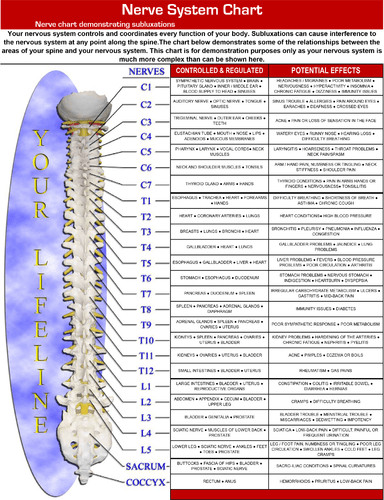6.7: Get Your Back On Track
- Page ID
- 14095
\( \newcommand{\vecs}[1]{\overset { \scriptstyle \rightharpoonup} {\mathbf{#1}} } \)
\( \newcommand{\vecd}[1]{\overset{-\!-\!\rightharpoonup}{\vphantom{a}\smash {#1}}} \)
\( \newcommand{\id}{\mathrm{id}}\) \( \newcommand{\Span}{\mathrm{span}}\)
( \newcommand{\kernel}{\mathrm{null}\,}\) \( \newcommand{\range}{\mathrm{range}\,}\)
\( \newcommand{\RealPart}{\mathrm{Re}}\) \( \newcommand{\ImaginaryPart}{\mathrm{Im}}\)
\( \newcommand{\Argument}{\mathrm{Arg}}\) \( \newcommand{\norm}[1]{\| #1 \|}\)
\( \newcommand{\inner}[2]{\langle #1, #2 \rangle}\)
\( \newcommand{\Span}{\mathrm{span}}\)
\( \newcommand{\id}{\mathrm{id}}\)
\( \newcommand{\Span}{\mathrm{span}}\)
\( \newcommand{\kernel}{\mathrm{null}\,}\)
\( \newcommand{\range}{\mathrm{range}\,}\)
\( \newcommand{\RealPart}{\mathrm{Re}}\)
\( \newcommand{\ImaginaryPart}{\mathrm{Im}}\)
\( \newcommand{\Argument}{\mathrm{Arg}}\)
\( \newcommand{\norm}[1]{\| #1 \|}\)
\( \newcommand{\inner}[2]{\langle #1, #2 \rangle}\)
\( \newcommand{\Span}{\mathrm{span}}\) \( \newcommand{\AA}{\unicode[.8,0]{x212B}}\)
\( \newcommand{\vectorA}[1]{\vec{#1}} % arrow\)
\( \newcommand{\vectorAt}[1]{\vec{\text{#1}}} % arrow\)
\( \newcommand{\vectorB}[1]{\overset { \scriptstyle \rightharpoonup} {\mathbf{#1}} } \)
\( \newcommand{\vectorC}[1]{\textbf{#1}} \)
\( \newcommand{\vectorD}[1]{\overrightarrow{#1}} \)
\( \newcommand{\vectorDt}[1]{\overrightarrow{\text{#1}}} \)
\( \newcommand{\vectE}[1]{\overset{-\!-\!\rightharpoonup}{\vphantom{a}\smash{\mathbf {#1}}}} \)
\( \newcommand{\vecs}[1]{\overset { \scriptstyle \rightharpoonup} {\mathbf{#1}} } \)
\( \newcommand{\vecd}[1]{\overset{-\!-\!\rightharpoonup}{\vphantom{a}\smash {#1}}} \)
\(\newcommand{\avec}{\mathbf a}\) \(\newcommand{\bvec}{\mathbf b}\) \(\newcommand{\cvec}{\mathbf c}\) \(\newcommand{\dvec}{\mathbf d}\) \(\newcommand{\dtil}{\widetilde{\mathbf d}}\) \(\newcommand{\evec}{\mathbf e}\) \(\newcommand{\fvec}{\mathbf f}\) \(\newcommand{\nvec}{\mathbf n}\) \(\newcommand{\pvec}{\mathbf p}\) \(\newcommand{\qvec}{\mathbf q}\) \(\newcommand{\svec}{\mathbf s}\) \(\newcommand{\tvec}{\mathbf t}\) \(\newcommand{\uvec}{\mathbf u}\) \(\newcommand{\vvec}{\mathbf v}\) \(\newcommand{\wvec}{\mathbf w}\) \(\newcommand{\xvec}{\mathbf x}\) \(\newcommand{\yvec}{\mathbf y}\) \(\newcommand{\zvec}{\mathbf z}\) \(\newcommand{\rvec}{\mathbf r}\) \(\newcommand{\mvec}{\mathbf m}\) \(\newcommand{\zerovec}{\mathbf 0}\) \(\newcommand{\onevec}{\mathbf 1}\) \(\newcommand{\real}{\mathbb R}\) \(\newcommand{\twovec}[2]{\left[\begin{array}{r}#1 \\ #2 \end{array}\right]}\) \(\newcommand{\ctwovec}[2]{\left[\begin{array}{c}#1 \\ #2 \end{array}\right]}\) \(\newcommand{\threevec}[3]{\left[\begin{array}{r}#1 \\ #2 \\ #3 \end{array}\right]}\) \(\newcommand{\cthreevec}[3]{\left[\begin{array}{c}#1 \\ #2 \\ #3 \end{array}\right]}\) \(\newcommand{\fourvec}[4]{\left[\begin{array}{r}#1 \\ #2 \\ #3 \\ #4 \end{array}\right]}\) \(\newcommand{\cfourvec}[4]{\left[\begin{array}{c}#1 \\ #2 \\ #3 \\ #4 \end{array}\right]}\) \(\newcommand{\fivevec}[5]{\left[\begin{array}{r}#1 \\ #2 \\ #3 \\ #4 \\ #5 \\ \end{array}\right]}\) \(\newcommand{\cfivevec}[5]{\left[\begin{array}{c}#1 \\ #2 \\ #3 \\ #4 \\ #5 \\ \end{array}\right]}\) \(\newcommand{\mattwo}[4]{\left[\begin{array}{rr}#1 \amp #2 \\ #3 \amp #4 \\ \end{array}\right]}\) \(\newcommand{\laspan}[1]{\text{Span}\{#1\}}\) \(\newcommand{\bcal}{\cal B}\) \(\newcommand{\ccal}{\cal C}\) \(\newcommand{\scal}{\cal S}\) \(\newcommand{\wcal}{\cal W}\) \(\newcommand{\ecal}{\cal E}\) \(\newcommand{\coords}[2]{\left\{#1\right\}_{#2}}\) \(\newcommand{\gray}[1]{\color{gray}{#1}}\) \(\newcommand{\lgray}[1]{\color{lightgray}{#1}}\) \(\newcommand{\rank}{\operatorname{rank}}\) \(\newcommand{\row}{\text{Row}}\) \(\newcommand{\col}{\text{Col}}\) \(\renewcommand{\row}{\text{Row}}\) \(\newcommand{\nul}{\text{Nul}}\) \(\newcommand{\var}{\text{Var}}\) \(\newcommand{\corr}{\text{corr}}\) \(\newcommand{\len}[1]{\left|#1\right|}\) \(\newcommand{\bbar}{\overline{\bvec}}\) \(\newcommand{\bhat}{\widehat{\bvec}}\) \(\newcommand{\bperp}{\bvec^\perp}\) \(\newcommand{\xhat}{\widehat{\xvec}}\) \(\newcommand{\vhat}{\widehat{\vvec}}\) \(\newcommand{\uhat}{\widehat{\uvec}}\) \(\newcommand{\what}{\widehat{\wvec}}\) \(\newcommand{\Sighat}{\widehat{\Sigma}}\) \(\newcommand{\lt}{<}\) \(\newcommand{\gt}{>}\) \(\newcommand{\amp}{&}\) \(\definecolor{fillinmathshade}{gray}{0.9}\)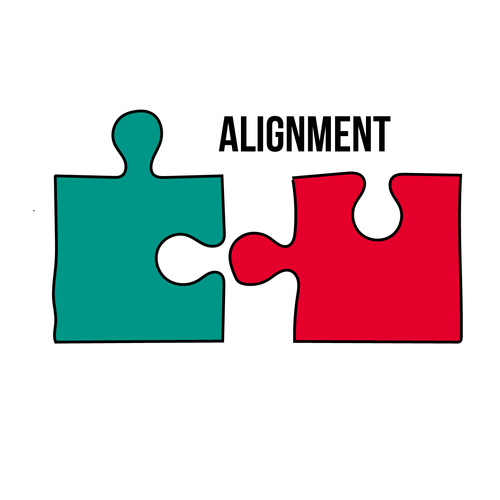
National Health Education Standards (NHES)
- 7.12.2 Demonstrate a variety of healthy practices and behaviors that will maintain or improve the health of self and others.
Wellness Guidelines
- Increase the frequency of physical activity
- Decrease sedentary behavior

- Instruction: In a group or think pair share format, have participants discuss the following questions. Acknowledge those who have progressed toward their goal(s) and encourage anyone who wants to change or modify their goal to get 1:1 support.
- Share: Let’s discuss our SMART Goals.
- How is it going with your current SMART goal?
- What are some ways you can improve progress toward your goal? (Grows)
- What are some ways you are doing well with progress towards your goal? (Glows)
Guideline: Increase Frequency of Physical Activity and Decrease Sedentary Behavior
- Share: What guideline do you think is related to today’s lesson? Who has a SMART Goal related to this guideline?
- Instruction: Select one activity.
- Guideline Popcorn: The group lists all 8 guidelines rapidly in popcorn format.
- Guideline Charades: Divide participants into groups and assign each a guideline. Each group has to silently act out the guideline for the rest to guess.
- Two Truths and One Lie:
- Truth 1: Sitting for more than 7 hours a day can affect your spine posture.
- Truth 2: The shape of the spine assumes an S-shape.
- Lie: Physical activity can damage your spine.
- Share: When done properly, physical activity reduces stiffness by strengthening the back muscles and keeping the tendons flexible. Improved mobility through physical activity can prevent tearing under stress and back pain.
4. Questions to discuss and/or journal:
-
Do you know if you have good posture or poor posture?
-
How many times a week do you stretch?
-
Do you or anyone you know have spine problems?
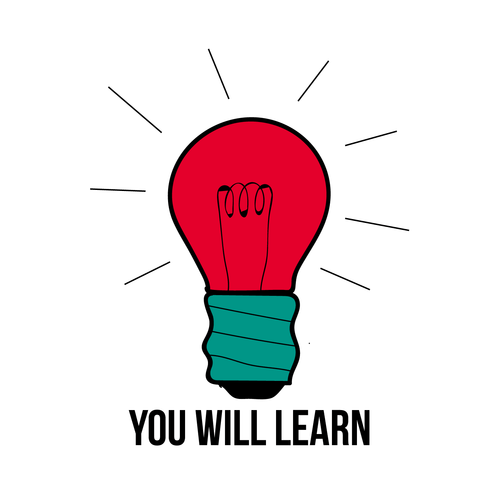
- How to keep your spine healthy
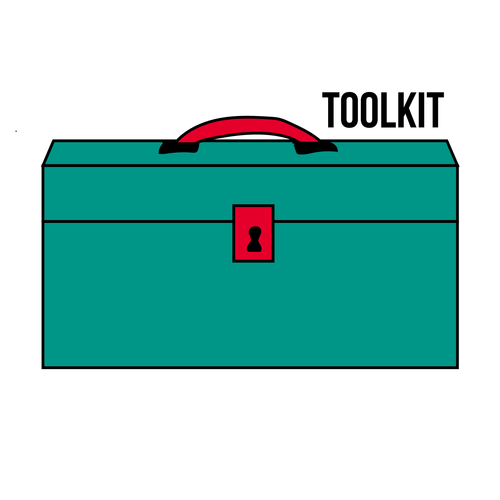
- Worksheets
- Slide presentation
- Model of a Spine (optional: see I Got Your Back activity)
- Circular (preferred) or knot shaped Pretzels, not pretzel sticks
- Gummy Lifesavers
- Pipe Cleaners
- 2 Bowls per group (see I Got Your Back activity)
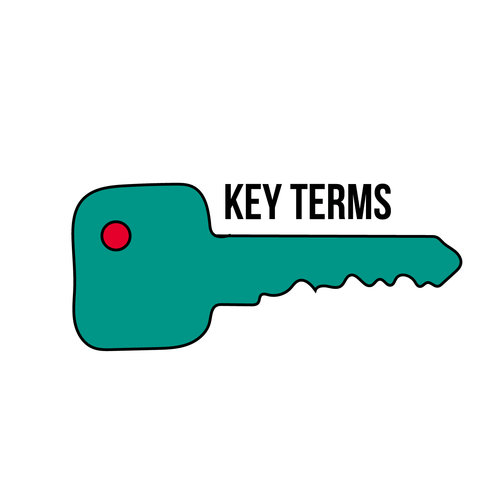
[As defined by the American Association of Neurological Surgeons, n.d.; Merriam-Webster, n.d.; Smatt Family Chiropractic, n.d.]
- Spine: A flexible bone column that goes from the base of the skull to the tailbone. Also referred to as the vertebral column, spinal column, or backbone.
- Ligaments: Fibrous connective tissue that links bones together at joints and passes between the bones of the spine.
- Intervertebral disc: A tough, elastic cushion located between the vertebrae in the spinal column; acts as a shock absorber.
- Spinal Cord: The cord of nerve tissue enclosed in the spinal canal. It serves not only as a pathway for nerve impulses to and from the brain but also as a center for operating and coordinating reflex actions independent of the brain.
- Central Nervous System: Includes the nerves in the brain and spinal cord.
- Vertebrae: Individual bones that make up the spine. They are divided into the cervical spine (neck), the thoracic spine (upper back or rib cage), the lumbar spine (lower back) and the sacral spine (pelvis or base of the spine).
- Subluxation: A subluxation is when a spinal bone or vertebra moves out of its normal position, interfering with messages flowing from the brain to body.
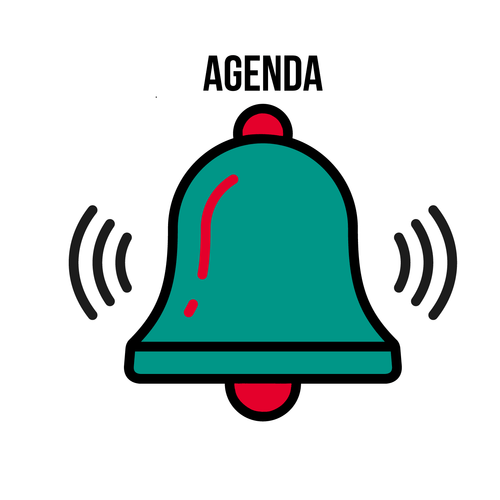
- Do Now
- Good to Know Facts: Spinal Health
- Real World Relevance Activity: You’ll Be Spine
- Hands-On Activity: I Got Your Back
- Exit Ticket
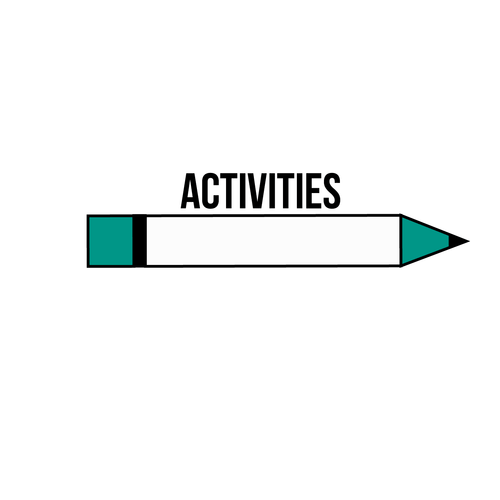
Do Now:
- Instruction: Have participants answer the following question(s) on their worksheet or by sharing out loud.
- In one minute, list all of the functions of the spine or the reasons why you think the spine is important.
- Instruction:
- Have students share out. Be sure to share any important functions not covered by participants.
- Gives the ability to move.
- Protects the spinal cord.
- The main structure of our body holding our head, arms and legs.
- Have students share out. Be sure to share any important functions not covered by participants.
Good to Know Facts: Spinal Health
- (Optional for Facilitator) Instruction:
- Create the spine model from the I Got Your Back Activity to be used as a model for the lecture.
- Share:
- The spine is a flexible bone column that goes from the base of the skull to the tailbone [American Association of Neurological Surgeons, n.d.] It is the body’s central support structure that lets you twist and bend your body and keeps your head, stomach, and arms together [KidsHealth, 2015].
- The spine also protects the spinal cord— a cord of nerve tissue within the spine. The spinal cord and the brain make up the central nervous system, which is responsible for communicating to and from the brain. [KidsHealth, 2015]
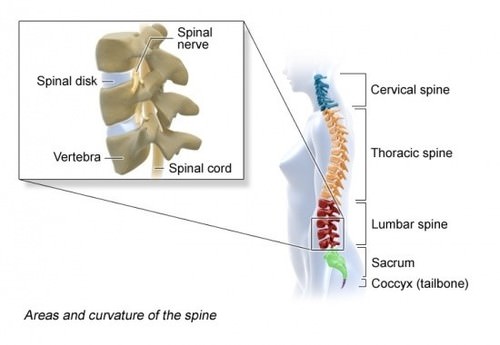 Image provided by PubMed Health. (2015). How does the spine work? Retrieved from www.ncbi.nlm.nih.gov/pubmedhealth/PMH0072652/
Image provided by PubMed Health. (2015). How does the spine work? Retrieved from www.ncbi.nlm.nih.gov/pubmedhealth/PMH0072652/ - Intervertebral discs are cushions in between the bones of the spine that absorb shock or pressure when we are active [American Association of Neurological Surgeons, n.d.]. Without these cushions, the small bones of the vertebrae would be rubbing against each other, which is why we need these important protective discs (refer to the spine image or model for reference).
- Share:
- Neck and back pain is a very common health problem worldwide.
- There are many factors that can cause this pain such as injuries, accidents, bad posture, heavy lifting, and stress [American Chiropractic Association, n.d.].
- Neck and back pain can also come from something called subluxation. Subluxation is when a spinal bone or vertebra moves out of its normal position. More simply put, subluxation is a misalignment.
- Subluxation can block the messages flowing from the brain to the body [Madison Avenue Chiropractic Center & Smatt Family Chiropractic, n.d.].
- Here are three factors that may cause a subluxation:
- Physical: car accidents, sports injuries, exercising improperly, poor posture, lifting heavy objects, or activities that require your head to be bent forward for long periods of time.
- For example, looking down at your cell phone for prolonged periods of time.
- Mental: stress or emotional distress.
- Chemical: pollution, toxins, medications or drugs, unhealthy foods that can cause inflammation such as: refined sugar and grains, foods with artificial coloring, additives, and preservatives. [Madison Avenue Chiropractic Center & Smatt Family Chiropractic, n.d.].
- Physical: car accidents, sports injuries, exercising improperly, poor posture, lifting heavy objects, or activities that require your head to be bent forward for long periods of time.
 Image provided by Smatt Family Chiropractic. (n.d.). What is a subluxation and what does it do to me? Retrieved from: https://www.chirotime.com/page/sublux.html
Image provided by Smatt Family Chiropractic. (n.d.). What is a subluxation and what does it do to me? Retrieved from: https://www.chirotime.com/page/sublux.html- Subluxations can be fixed or corrected by visiting a chiropractor — a chiropractor detects and corrects subluxations of the spinal column. Some benefits of correcting a subluxation are:
- The weakening of the spine is prevented.
- Healing, repair, and recovery are improved.
- Removes nerve interference improving the ability for healing messages to travel over the nerve. [Madison Avenue Chiropractic Center & Smatt Family Chiropractic, n.d.].
- Here are some spinal tips that you can do to prevent back pain and subluxations:
- Exercise regularly- healthy muscles support proper alignment.
- Eat healthily- proper nutrition promotes healthy bones and joints.
- Get regular spinal check-ups.
- Be aware of your posture/ avoid slouching.
- Raise your computer screen to eye level.
- Text with your head straight (not looking down).
- Lighten your bags and backpacks- try not to carry more than 3 textbooks in your bag/backpack at a time.
- Sleep on your back or side- not your stomach.
- Drink lots of water.
- Get the recommended amount of sleep.
- Learn to relax- relaxation techniques like deep, relaxed breathing and meditation can promote good muscle and posture balance [Madison Avenue Chiropractic Center & Smatt Family Chiropractic, n.d.]
Real World Relevance Activity: You’ll Be Spine
- Instruction:
- Have participants practice the poor and good postures to feel the difference in each of the below:
- Sitting at the desk
- Standing with or without a backpack on
- Sitting down reading a book or using your phone
- Walking like you are looking down at your phone
- Simply standing
- Have participants practice the poor and good postures to feel the difference in each of the below:
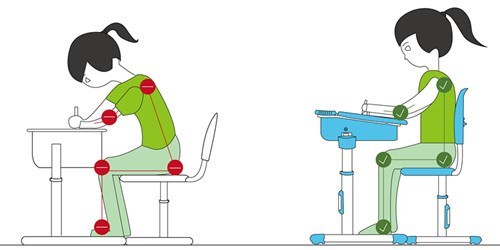 Image provided by Study Right. (n.d). Posture. Retrieved from: http://www.studyright.ie/the-idea
Image provided by Study Right. (n.d). Posture. Retrieved from: http://www.studyright.ie/the-idea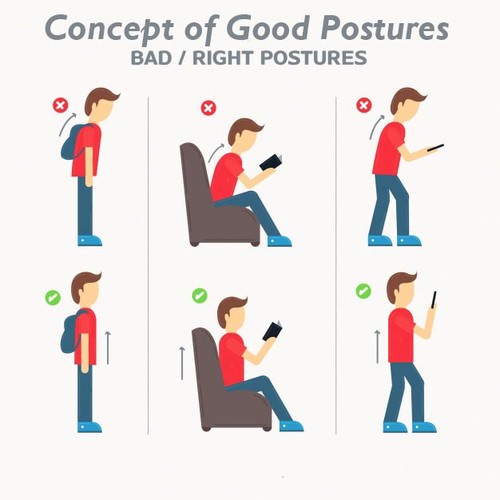 Image provided by MedTips. (2018). Meaning of correct posture. Retrieved from: www.meditips.in/body-posture/
Image provided by MedTips. (2018). Meaning of correct posture. Retrieved from: www.meditips.in/body-posture/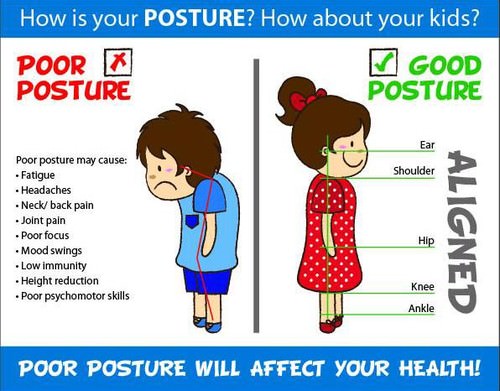 https://allhealthykids.org/techtext-...health-threat/
https://allhealthykids.org/techtext-...health-threat/Instruction:
- Have participants write on their worksheet or share out loud the following question:
- Would maintaining good posture throughout the day be easy or difficult? Why or Why not?
Hands-On Activity: I Got Your Back
- Share:
- Now we will be making a model to see if it looks and feels like a spine.
- Set Up:
- Separate the pretzels and gummies into bowls.
- Pass out pipe cleaners to participants.
- Instruction:
- Divide participants into three (3) to five (5) groups.
- Have each participant in each group grab 10 pretzels and 9 lifesaver gummies.
- Have participants tie a knot at the end of the pipe cleaner.
- Have participants string a pretzel through the small hole and then a gummy. Continue the pattern of pretzel, gummy, pretzel, gummy until they run out.
- Tie a knot on the top of the pipe cleaner.
- Share:
- Explain that the pretzels are the vertebrae, the individual bones in the spine.
- The lifesaver gummies are the intervertebral discs that act as shock absorbers.
- The pipe cleaner is the spinal cord, which connects the brain and your body.
- Have participants feel their spine model.
- (Optional) Have participants feel their own spine to compare.
- Instruction:
- After the activity, participants may eat the model.
- Have participants share out loud the following question:
- Does your spine feel like your spine model?
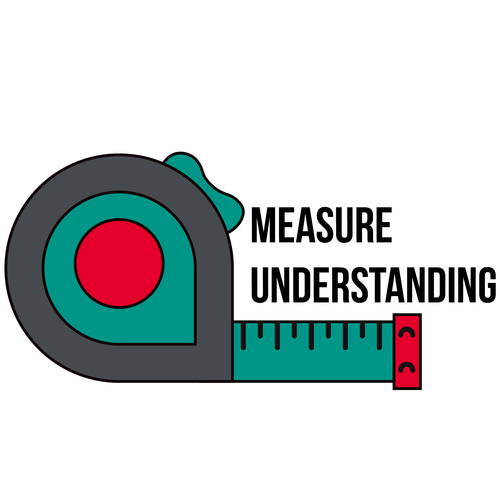
Exit Ticket:
- Instruction: Have participants write on their worksheet or share out loud the following question.
- What are two things you will try to improve or maintain good posture and prevent back/neck pain?
Special thank you to our partners at Madison Avenue Chiropractic Center & Smatt Family Chiropractic for supporting the content of this lesson:
Dr. Michael Smatt and Dr. Lori Smatt are prestige chiropractors providing knowledge on the wonders of good health through chiropractic.
Bibliography
- American Association of Neurological Surgeons. (n.d.). Anatomy of the Spine and Peripheral Nervous System. Retrieved from: https://www.aans.org/Patients/Neuros...Nervous-System
- American Chiropractic Association. (n.d.). Back Pain Facts and Statistics. Retrieved from: https://www.acatoday.org/Patients/He...and-Statistics
- Healthy Kids and Family Chiropractic (n.d). Retrieved from: https://allhealthykids.org/techtext-...health-threat/
- (2015). Bones. Retrieved from: https://kidshealth.org/en/kids/bones.html
- Know Your Back. (n.d.). Prevention. Retrieved from: https://www.spine.org/KnowYourBack/Prevention/LifestyleChoices/10TipsforaHealthyBack
- Madison Avenue Chiropractic Center & Smatt Family Chiropractic. (n.d.). What is subluxation and what does it do to me? Retrieved From: https://www.chirotime.com/page/sublux.html
- Mayfield Brain & Spine. (2016). Anatomy of the Human Spine. Retrieved from: orthoinfo.aaos.org/en/diseas.../spine-basics/
- (2018). Meaning of correct posture. Retrieved from: www.meditips.in/body-posture/
- Merriam Webster. (n.d.). Disability. Retrieved from: http://www.learnersdictionary.com/de...ion/disability
- National Institute of Neurological Disorders and Stroke. (2014). Low Back Pain Fact Sheet. Retrieved From: https://www.ninds.nih.gov/Disorders/Patient-Caregiver-Education/Fact-Sheets/Low-Back-Pain-Fact-Sheet
- O’Rahilly. (2008). The Vertebral Column. Retrieved from: https://www.dartmouth.edu/~humananat...hapter_39.html
- (2003). SpineBasics. Retrieved from: orthoinfo.aaos.org/en/diseas.../spine-basics/
- Spine-Health. (2004). How Exercise Helps the Back. Retrieved from: https://www.spine-health.com/wellness/exercise/how-exercise-helps-back
- Spine Health Institute. (n.d). How to keep your spine healthy as you age. Retrieved From: http://www.thespinehealthinstitute.com/news-room/health-blog/how-to-keep-your-spine-healthy-as-you-age
- Seok Lee, J. & Kang Jung, S. (2016). The effects of strength exercise and walking on lumbar function, pain level and body composition in chronic back pain patients. Retrieved From: https://www.ncbi.nlm.nih.gov/pmc/articles/PMC5091063/
- Study Right. (n.d). Posture. Retrieved from: http://www.studyright.ie/the-idea
- (n.d). Low Back Pain. Retrieved From: http://www.who.int/medicines/areas/priority_medicines/Ch6_24LBP.pdf
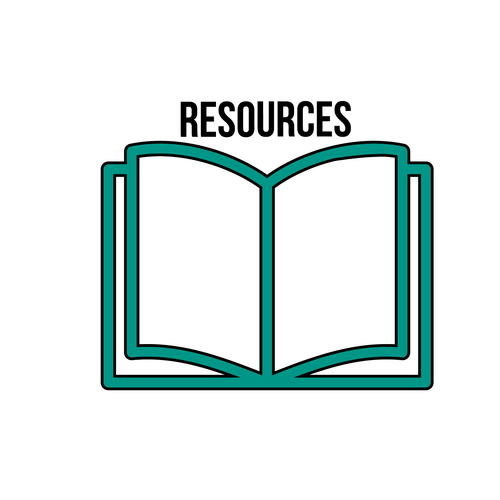
- Visit chirotime.com for more information on subluxation and chiropractic knowledge.
- Nerve System Chart
